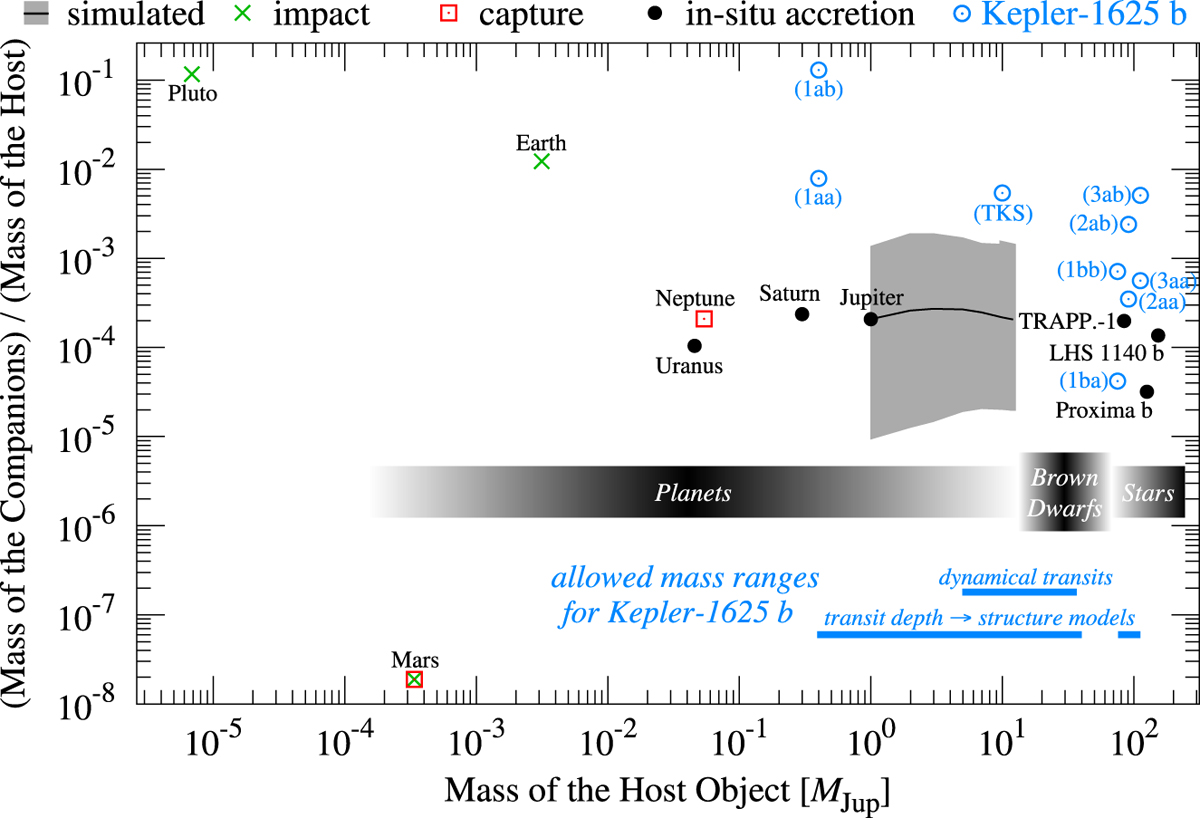Fig. 2

Mass ratios of companions and hosts, i.e., moons around planets and planets around VLMSs. Host masses are shown along the abscissa, mass ratios on the ordinate. Solar system planets with moons are shown with different symbols toindicate the respective formation scenarios of their satellites (see legend above the panel). Three VLMSs with roughly Earth-mass planets (TRAPPIST-1, LHS 1140, Proxima Centauri) are plotted as examples of formation via accretion in the stellar regime. The solid black line expanding from Jupiter’s position signifies simulations of moon formation in the super-Jovian regime, with the gray shaded region referring to uncertainties in the parameterization of the accretion disk. Possible scenarios for the planetary, BD, and VLMS nature of Kepler-1625 b are indicated with blue open circles (see Table 1 for details). The plausible mass range for Kepler-1625 b is shown with a blue line in the lower right corner and is the same as shown in Fig. 1.
Current usage metrics show cumulative count of Article Views (full-text article views including HTML views, PDF and ePub downloads, according to the available data) and Abstracts Views on Vision4Press platform.
Data correspond to usage on the plateform after 2015. The current usage metrics is available 48-96 hours after online publication and is updated daily on week days.
Initial download of the metrics may take a while.


